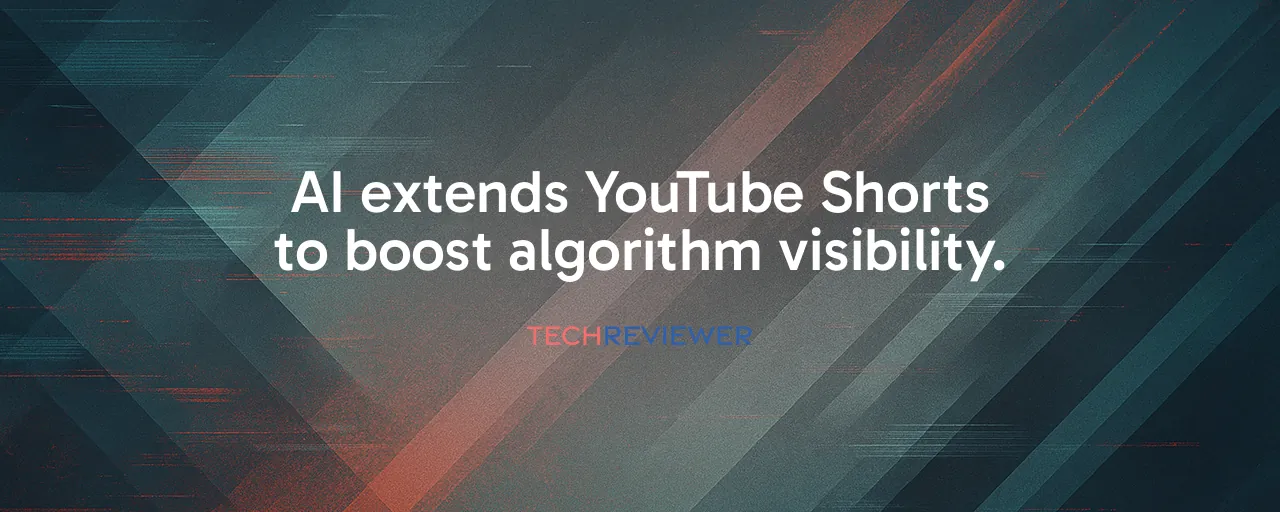Extending Creativity With a Click
YouTube's latest tool, Extend with AI, lets creators extend their Shorts by generating short AI-powered segments, helping them meet the platform's ideal length of up to three minutes as of October 2024. Powered by Google DeepMind's Veo 3, it analyzes a clip's style and pacing, then generates extra seconds that blend seamlessly with the original. Picture a vlogger with a snappy 45-second clip who needs a punchy outro to hit the algorithm's sweet spot. This tool makes it happen without extra filming or editing know-how. In 2025, with YouTube Shorts racking up 90 billion daily views, tools like these are becoming essential for creators aiming to stand out.
The process is simple yet powerful. Creators select up to five seconds of footage, pick from system-suggested prompts, and let the AI craft an extension that matches the clip's vibe. It's a far cry from the days of wrestling with complex editing software or reshooting scenes. Yet, the tool's reliance on pre-set prompts limits its flexibility, leaving some creators wanting more control over their vision.
A Tale of Two Creators
Consider Sarah, a YouTube Shorts creator who films dance challenges. Her vibrant 40-second clips often fall short of the platform's optimal length, risking lower visibility. With Extend with AI, she adds a smooth transition or an extra move, boosting her video to 60 seconds without breaking a sweat. The result? Her content aligns better with YouTube's algorithm, and her views climb. Data from 2025 shows YouTube's 12.8% share of U.S. TV viewing, far ahead of competitors, making such tools critical for creators like Sarah to stay competitive.
On TikTok, meanwhile, Alex, a comedy skit creator, faces a different reality. While TikTok offers AI tools for advertisers, its 58-minute average daily user engagement demands hyper-original content from creators like Alex. When Alex tried a similar AI extension, viewers noticed slight visual hiccups, like a mismatched lighting shift, and called it 'AI slop.' With only 26% of audiences embracing AI-generated content in 2025, down from 60% in 2023, Alex's experience highlights a key lesson: AI can amplify efficiency but risks alienating viewers if the output feels inauthentic.
The Authenticity Tightrope
For creators, AI tools like Extend with AI are a double-edged sword. They save time and lower barriers, letting novices produce polished content without fancy gear. YouTube's integration of Veo 3 Fast, optimized for speed and operating at 480p, showcases how far AI has come since earlier models churned out blurry five-second clips. But prominent voices, like YouTuber MrBeast, warn of a darker side. On October 5, 2025, he called AI a threat to creators' livelihoods, pointing to fears that automated content could flood platforms, drowning out human creativity.
Viewers are skeptical too. As AI-generated extensions become common, audiences increasingly spot artifacts, think distorted objects or unnatural movements, that break the illusion of authenticity. YouTube's mandatory disclosure rules, effective March 2024, require creators to tag AI-altered content, but this can feel like a scarlet letter for those building a personal brand. The challenge lies in balancing AI's efficiency with the human spark that keeps viewers coming back.
The Bigger Picture in Content Creation
YouTube's push into AI isn't just about one tool; it's part of a broader race against TikTok and Instagram Reels. While YouTube Shorts boasts 90 billion daily views, TikTok's 1.94 billion global users and deeper engagement keep it a fierce rival. YouTube's edge lies in its ecosystem, creators earn 45% of ad revenue after music licensing, and the platform's long-form content and shopping features offer more income streams than TikTok's Creator Rewards. AI tools like Extend with AI could tip the scales further by boosting content volume, but only if quality keeps pace.
Regulatory hurdles loom large. The U.S. Copyright Office's January 2025 report states AI-generated works lack copyright protection, creating uncertainty for creators using tools like Extend with AI. In contrast, courts in Beijing have recognized some AI-assisted works as copyrightable, hinting at a fragmented global landscape. For now, YouTube's exclusion of the EU and UK from the tool's rollout reflects caution around stricter data and transparency rules.
What Creators Can Learn
The rise of AI video tools offers clear takeaways. First, efficiency matters, tools like Extend with AI let creators like Sarah produce more content faster, a must in a crowded market. Second, authenticity is non-negotiable. Alex's TikTok experience shows that viewers crave human-driven content, even if AI smooths the edges. Finally, platforms must prioritize quality over quantity. YouTube's SynthID watermarking helps identify AI content, but without consistent output, creators risk losing trust.
As AI reshapes short-form video, creators face a choice: embrace tools to streamline their work or double down on raw, human creativity. The smartest path likely blends both, using AI to handle grunt work while keeping the heart of their content unmistakably human. With platforms like YouTube and TikTok neck-and-neck, those who master this balance will likely come out on top.
